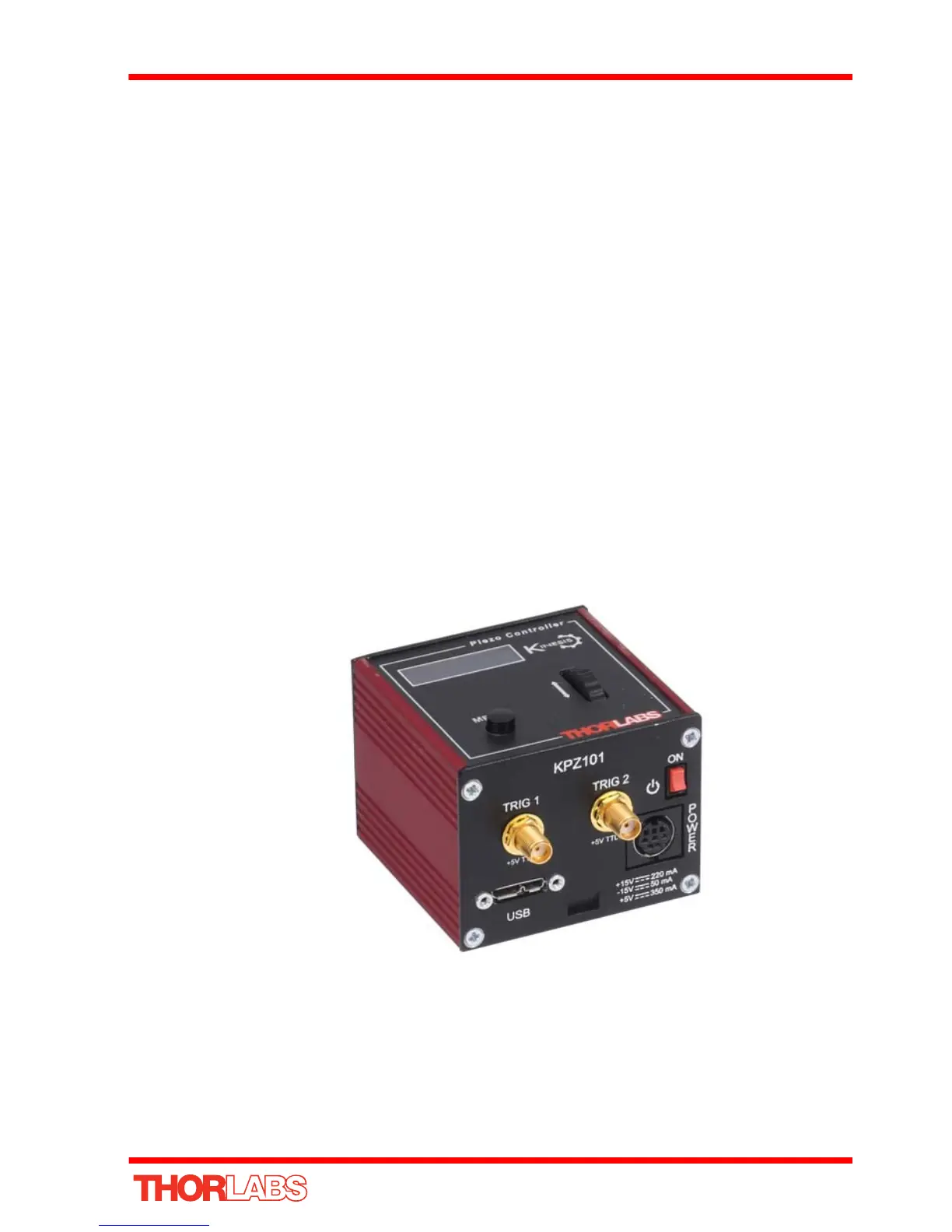5
Chapter 2 Overview and Setup
2.1 Introduction
The K-Cube Piezo Co ntroller (KPZ101) is a ne w very compact sing le channel
controller/driver for easy man ual and automatic control of a wi de range of piezo
stacks and actuators. This driver is capable of delivering up to 150V of drive voltage
at 7.5mA - all owing operating bandwidths up to 1kHz (see specs). The KPZ101
provides immediate 'out of the box' operation with the Thorlabs complete range of
bare piezo stacks, piezo equipped actuators and piezo driven mirror mounts.
Furthermore, when operated together with the K-Cube Strain Gauge Reader unit
(KSG101), high precision closed loop operation is possible using the complete range
of feedback equipped piezo actuators available from Thorlabs.
For convenience the footprint of this unit has been kept to a minimum, measuring only
60mm x 60mm x 47mm (2.36” x 2.36” x 1.85”) and with the facility to directly mount
to the optical table close to the device under control. Table top operation also allows
minimal drive cable lengths for easier cable management. All manual controls a re
located on the top face of the unit – very convenient when manually adjusting piezo
positions using the digitally encoded adjustment pot and easy to read voltage display
(with brightness adjustment).
Fig. 2.1 K-Cube Piezo Driver (KPZ101)
Although compact in footprint, this unit offers a fully featured piezo control capability.
To support a wide variety of piezo devices the output range can be user selected to
75V, 100V or 150V. The resolution of the digitally encoded adjustment pot is easily
altered to provide very accurate p ositioning control. Direct hardware control of the
high voltage output can be facilitated using the low voltage input connector.

